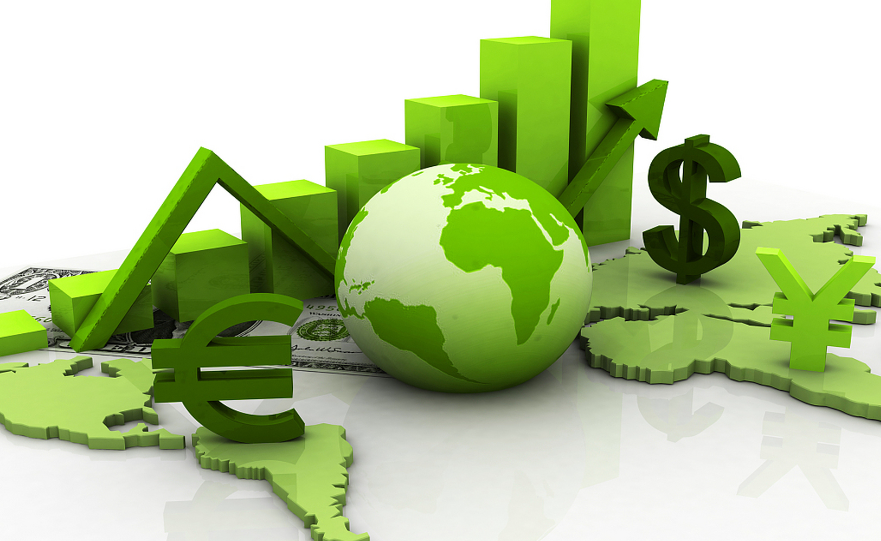Global Economy: Divergence Amidst Steady Recovery
Advertisements
The world economy is gradually emerging from the tumultuous shadows cast by recent events as we approach 2025. While growth remains tepid, signs of resilience and recovery are starting to appear, albeit with notable disparities between different regions. As we look ahead, the projected stability in global economic growth juxtaposes with significant underlying challenges shaped by recent shocks, including the pandemic, geopolitical tensions, inflationary pressures, and monetary tightening measures implemented by various central banks.
In 2024, the International Monetary Fund (IMF) anticipates a modest global growth of around 3.2%. This growth rate signals one of the slowest periods in more than three decades, with the years from 2020 to 2024 marking a particularly challenging epoch for global economies. The recovery is expected to be slow and uneven, as many nations continue to grapple with the long-term ramifications of the COVID-19 pandemic, which altered essential economic structures and contributed to increased inequality, rising government debts, and hindered global trade flows.
Looking forward to 2025, the IMF forecasts that the world economy may continue on a low-growth trajectory, plagued by several persistent issues stemming from the pandemic's scarring effects. The socio-economic fabric has been significantly altered, creating a landscape where disparities in wealth and income are exacerbated, human capital development has been stunted, and global economic integration has been disrupted. The result of these factors is a constrained growth momentum, with the IMF projecting a sustained growth rate of 3.2% for the upcoming year. However, various risks, particularly geopolitical tensions arising from U.S. trade policies, could further derail this projected growth, especially for smaller economies reliant on trade with the U.S.
Amid this cautious optimism lies the hope that inflation rates will continue their descent in 2024. As supply chains stabilize and energy prices remain low, global inflation is expected to ease, falling to a projected 5.8% for consumer prices in 2024—an improvement over the previous year. As fiscal policies return to a baseline normal, the unprecedented stimulus measures taken during the pandemic are expected to fade, resulting in weakened overall demand, thereby exerting downward pressure on inflation rates moving into 2025. The IMF estimates a further decline to 4.3% for 2025, although certain countries may face renewed inflationary pressures due to rising protectionism and tariffs.

The dynamics of global trade are projected to experience a mild recovery as well, rebounding from the depths of 2023. The World Trade Organization (WTO) forecasts a 2.7% growth in global goods trade for 2024, driven by easing inflation, lower interest rates from major central banks, and improved export performance from Asia. Yet, the forecast for 2025 indicates continued growth tempered by challenges presented by geopolitical instability and rising trade barriers. The WTO predicts that global trade will grow at a rate of 3% in 2025, but growth will certainly vary by region, with Asia anticipated to lead the way followed by robust performance from the Middle East and South America, while Europe might struggle.
Foreign direct investment (FDI) is showing signs of life following three years of stagnation. During the first half of 2024, global FDI amounted to $809 billion, showing a significant increase from the previous year, thanks in part to improved economic stability and decreased investment costs. However, when excluding investments from tax havens, growth remains lackluster. As 2025 approaches, the landscape for FDI appears cautiously optimistic, bolstered by clearer government policies and emerging development strategies. Yet geopolitical factors remain a critical influence, highlighting a landscape characterized by fragile, low-growth trends in investment.
On the fiscal policy front, a gradual normalization is underway as nations work to rein in pandemic-induced deficits. While government deficits have moderated, they remain elevated across both developed and emerging economies. The IMF reports that advanced economies expect their fiscal positions to stabilize, while emerging markets see a slight widening of deficits. In response to evolving economic conditions, major central banks initiated rate cuts throughout 2024, marking a significant shift in monetary policy, with the Federal Reserve’s decision to lower rates by 50 basis points in September setting the stage for a broader global trend towards easing monetary policy.
Entering 2025, the landscape is uncertain, especially as central banks face conflicting pressures, including the potential for rising inflation due to tariffs imposed by the newly-elected U.S. government. This volatility is likely to create a variety of responses across different economies, with the possibility of the Federal Reserve pausing rate cuts while the European Central Bank continues its accommodating stances and Japan cautiously raises rates. Thus, the balance of monetary policy will lead to diverging interest rate paths across the globe, reflecting each economy’s unique challenges and recovery trajectories.
In conclusion, while 2024 and 2025 may signal a potential turning point in the global economic landscape, characterized by modest recovery and falling inflation, significant hurdles remain. Geopolitical tensions, protectionist policies, and uneven growth across regions add layers of complexity that must be navigated. The development of fiscal and monetary policies in response to these factors will ultimately shape the sustainability and balance of the recovery process as nations work toward a more equitable and stable economic future. The road ahead may be intricate and fraught with challenges, but the current trend suggests a cautious optimism that many governments and economies will strive to harness for a better tomorrow.
Leave A Comment